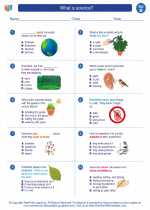Surface Tension
Surface tension is the property of the surface of a liquid that allows it to resist an external force. It is a result of the cohesive forces between the molecules in the liquid. This cohesive force creates a "skin" on the surface of the liquid, which gives it the ability to support objects or insects that would otherwise sink. Surface tension is responsible for many interesting phenomena, such as the formation of droplets, the ability of some insects to walk on water, and the shape of a meniscus in a graduated cylinder.
Causes of Surface Tension
Surface tension is caused by the imbalance of intermolecular forces at the surface of a liquid. The molecules on the surface of the liquid experience a net inward force due to the cohesive forces between them. This inward force causes the surface of the liquid to behave as if it were a stretched elastic membrane.
Effects of Surface Tension
Surface tension has several important effects. It allows small objects to float on the surface of a liquid, such as paper clips on water. It also causes liquid droplets to form spherical shapes, as this minimizes the surface area and, therefore, the energy of the system. Surface tension is also responsible for capillary action, which is the ability of a liquid to flow in narrow spaces without the assistance of, or in opposition to, external forces like gravity.
Applications of Surface Tension
Surface tension has numerous practical applications. For example, it is essential for the functioning of soaps and detergents, which reduce the surface tension of water and allow it to spread and wet surfaces more easily. Surface tension is also exploited in inkjet printing, where tiny droplets of ink are ejected onto a surface, and in the creation of emulsions, where one liquid is dispersed in another to form a stable mixture.
Studying Surface Tension
To understand surface tension, it is important to perform hands-on experiments. Simple activities like observing the shape of drops of water on different surfaces, or testing the ability of various objects to float on water, can help students grasp the concept. Additionally, discussing real-world examples of surface tension, such as the behavior of water striders on the surface of a pond, can make the topic more relatable and engaging.
When studying surface tension, it is important to remember that it is a fundamental property of liquids that has significant implications in various scientific and everyday contexts.
.◂Science Worksheets and Study Guides Second Grade. What is science?

 Worksheet/Answer key
Worksheet/Answer key
 Worksheet/Answer key
Worksheet/Answer key
 Worksheet/Answer key
Worksheet/Answer key
 Vocabulary/Answer key
Vocabulary/Answer key
